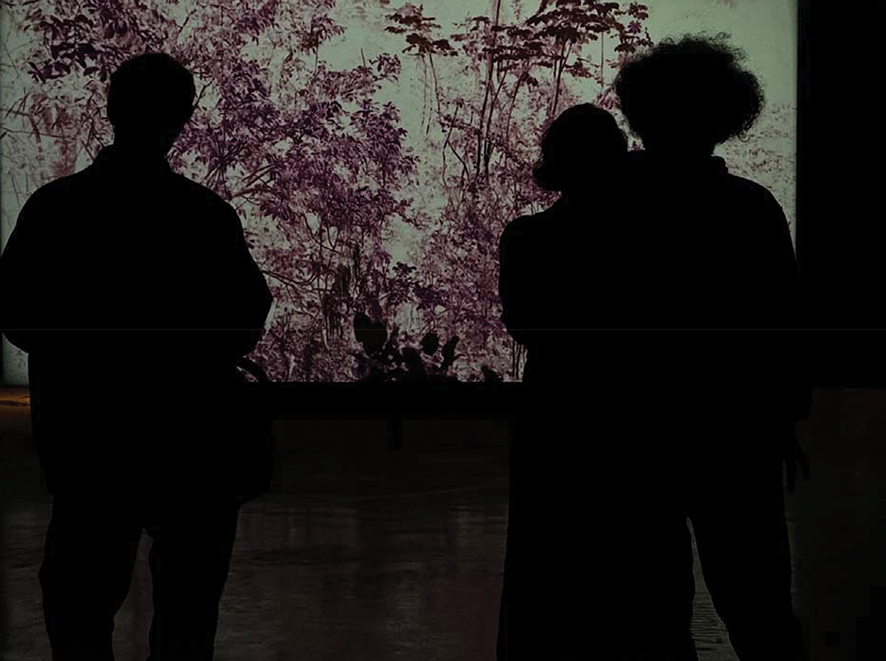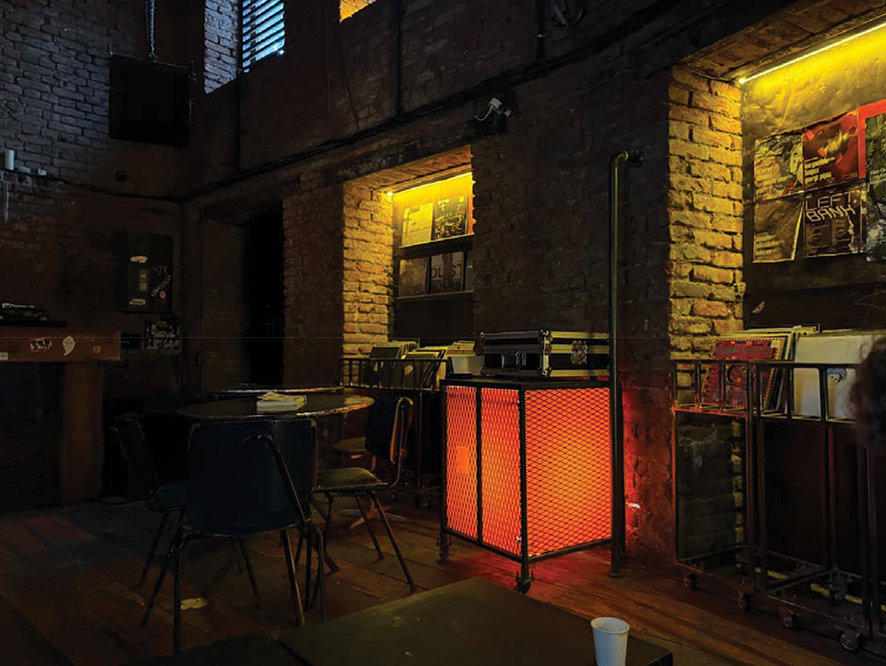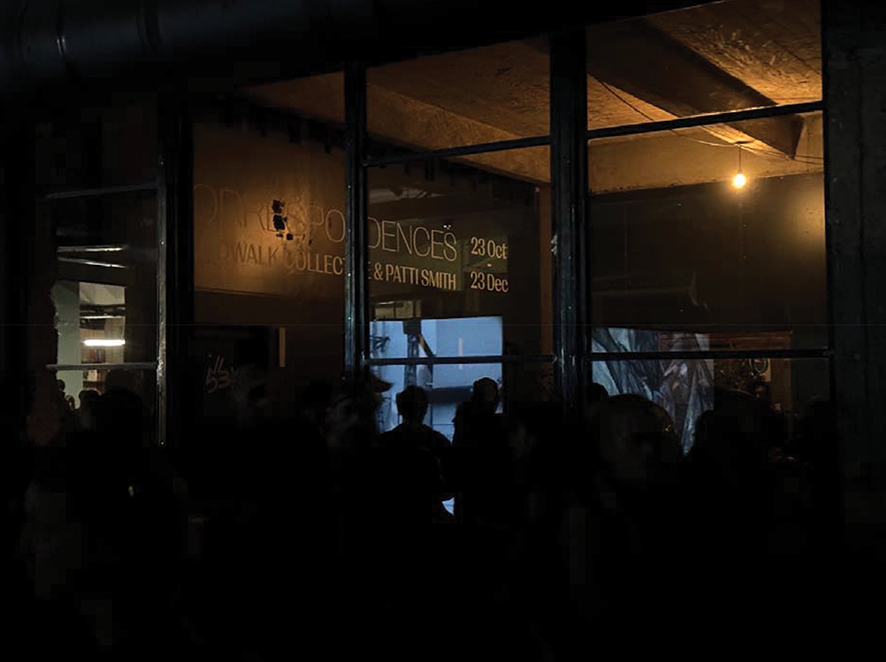As cities around the world seek new ways to foster innovation, drive economic growth, and improve quality of life, the concept of the creative city has emerged as a powerful model for urban development. In Tbilisi, this concept is rapidly reshaping the capital’s social and business landscape, positioning it as a hub for creativity and innovation in the Caucasus. Through a dynamic blend of cultural projects, repurposed spaces, and vibrant festivals, Tbilisi exemplifies the transformative potential of a creative city.

The idea of a “creative city” has gained traction in urban studies, culture policy, and business strategies over the past few decades. Initially popularized by Charles Landry in his influential book The Creative City: A Toolkit for Urban Innovators (2000), this concept views cities as dynamic spaces where creativity—whether in the arts, business, or urban planning—becomes the driving force for economic growth, social innovation, and cultural development. Today, the notion of a creative city is not limited to artistic endeavors alone; it encompasses a broader, more interconnected vision that integrates technology, culture, and business into the fabric of urban life. This is why it is so important today to explore the multifaceted nature of creative cities, their impact on society and business, and their potential as engines of inclusive growth and sustainable development.
The Genesis of the Creative City
Historically, cities have always been cultural hubs, from Renaissance Florence to early 20th-century Paris, where art, literature, and commerce flourished simultaneously. However, the contemporary notion of the creative city differs from these past examples in its intentional harnessing of creativity as a strategic resource. The emergence of the creative city model in the late 20th century coincided with deindustrialization and the shift from manufacturing-based economies to service-oriented, knowledge-driven economies. Global cities faced the challenge of revitalizing urban spaces once dominated by factories and warehouses, and creativity was seen as the solution.
Charles Landry argued that cities could reinvent themselves by fostering environments that encourage innovation, not just in traditional sectors like finance or technology, but also in culture, media, and the arts. This reframing positioned the creative class—artists, designers, architects, and media professionals—as central actors in the city’s economic ecosystem. The transformation of formerly derelict neighborhoods into vibrant cultural quarters (think of London’s Shoreditch or New York’s Williamsburg) exemplified how creativity could drive urban renewal.

While each creative city evolves according to its unique cultural context, several common fundamentals guide the transformation:
1. Cultural and Artistic Expression: A creative city values and invests in the arts, both traditional and contemporary. This includes public art, cultural institutions, festivals, and the preservation of heritage.
2. Urban Design and Repurposing: Creative cities focus on innovative urban planning, repurposing old or neglected spaces into new cultural or business hubs. Architecture, design, and sustainability play crucial roles in shaping the city’s physical and creative identity.
3. Creative Industries and Entrepreneurship: Creativity extends beyond the arts to include entrepreneurship, particularly in industries such as tech, media, fashion, and design. Creative cities provide platforms for new businesses and startups to emerge and thrive.
4. Public Engagement and Social Innovation: Creative cities prioritize inclusivity and community engagement. Whether through participatory art projects or spaces that encourage social interaction, these cities foster civic involvement and address social challenges through innovative solutions.

The Role of the Creative Class
Urban theorist Richard Florida expanded on this idea in his seminal work The Rise of the Creative Class (2002), arguing that cities that attract creative professionals—engineers, artists, scientists, and entrepreneurs—would thrive in the new economy. Florida’s concept of the creative class highlights the direct link between creativity and economic performance, with creative cities offering the right mix of talent, technology, and tolerance (Florida’s “3Ts”) to fuel innovation.
The creative class is both a producer and consumer of culture, driving demand for new products, services, and experiences. The urban environment must therefore cater to this demographic with vibrant cultural scenes, accessible public spaces, and a strong infrastructure for entrepreneurial ventures. Cities that successfully attract and retain creative professionals tend to develop thriving ecosystems where business and culture intersect. Tech startups, co-working spaces, pop-up art galleries, and festivals often flourish in such settings, contributing to a cycle of economic and cultural vitality.
Cultural Infrastructure as a Pillar of the Creative City
Cultural infrastructure—such as museums, galleries, theaters, music venues, and public art installations—forms the backbone of a creative city. These institutions not only offer spaces for artistic expression but also serve as engines for tourism and local economies. Cities like Berlin, Tbilisi, and Barcelona have leveraged their rich cultural heritage and innovative contemporary art scenes to attract both international tourists and foreign investment. The synergy between cultural infrastructure and the city’s broader economic goals underscores the pivotal role that culture plays in driving urban development.
Beyond the arts, creative cities often foster a variety of interdisciplinary spaces where innovation can emerge. For example, the fusion of technology and art is a growing trend in creative cities, leading to the rise of digital art installations, augmented reality experiences, and interactive exhibitions. This blending of disciplines mirrors the broader convergence of industries in the digital economy, where creative ideas are increasingly seen as commodities with tangible value.

Social Impact: Inclusion and the Creative City
A key argument for the creative city model is its potential to generate inclusive growth, benefiting not just the elite but also marginalized and disadvantaged communities. While many critics argue that creative cities can exacerbate gentrification and inequality—pricing out local residents as real estate markets boom—the counter-narrative is that a creative city can also be a more inclusive one.
Innovative urban policies and community-driven initiatives can ensure that the benefits of a creative city are widely shared. For example, public spaces designed for creative expression, such as open-air theaters or urban art galleries, can offer opportunities for all citizens to participate in the city’s cultural life. Additionally, creative cities that prioritize affordable housing, accessible education, and community-led development can provide avenues for underrepresented groups to engage in the creative economy.
Tbilisi, for instance, has witnessed a burgeoning of creative collectives and startups that center on inclusivity. Projects like Fabrika, a former Soviet sewing factory turned cultural hub, offer a space where young people from different backgrounds can interact, exchange ideas, and collaborate on creative projects. The same can be said for public festivals like Stamba, ATINATI Gallery or Tbilisi Mural Fest, which aim to bring contemporary art into the streets, engaging a wider audience in creative activities.

Business and the Creative Economy
The economic impact of creative cities is perhaps most visible in the rise of the creative industries. Defined by the United Nations Conference on Trade and Development (UNCTAD) as industries based on creativity, such as film, music, fashion, and digital media, the creative economy represents a significant growth sector globally. According to UNESCO, the global creative economy generated over $2.2 trillion in revenues and employed nearly 30 million people in 2020. This includes both traditional cultural industries like publishing and design, as well as newer sectors such as video games, animation, and e-sports.
Creative cities are well-positioned to capitalize on this growth by attracting companies and talent involved in the creative industries. For businesses, locating in a creative city offers proximity to a pool of skilled labor, dynamic cultural environments, and networks of like-minded entrepreneurs. Moreover, the emphasis on creativity in these cities often extends to their approach to governance and business regulation. A city that promotes innovation through flexible policies, startup incubators, and investment in digital infrastructure will inevitably appeal to forward-thinking businesses and investors.
Moreover, creative cities often serve as testing grounds for new business models. From cooperative enterprises and social entrepreneurship to the gig economy and digital platforms, the interplay between creativity and commerce generates new ways of organizing economic activity. This is especially relevant in the context of urban sustainability, where creative solutions to environmental challenges—such as green architecture, renewable energy initiatives, or sustainable fashion—are increasingly seen as viable business opportunities.
Tbilisi: A City in Creative Transformation
Tbilisi’s recent urban evolution exemplifies the creative city model in action. Once known primarily for its historical architecture and rich cultural traditions, the Georgian capital has embraced contemporary creativity in ways that have redefined its identity and global standing. Creative hubs such as Stamba, Fabrika, Wine Factory and Haraki, Open Space, Left Bank or TBC Concepts reflect a new era of innovation that is reshaping both the social and business fabric of the city.
From Soviet Ruin to Creative Landmark: One of the most iconic examples of Tbilisi’s creative transformation is Stamba and Fabrika. Fabrika was a former Soviet sewing factory in the city’s Chugureti district. Today, it is a sprawling cultural complex that includes a hostel, art studios, galleries, cafes, and co-working spaces. Its open courtyard regularly hosts concerts, pop-up markets, and performances, making it a gathering place for Tbilisi’s young creatives, digital nomads, and tourists. Stamba is a hotel and cultural hub housed in a repurposed Soviet-era publishing house. Stamba’s industrial-chic design maintains the raw architecture of its past while incorporating contemporary artistic elements, symbolizing the city’s ability to blend tradition with modernity. Within Stamba, the Tbilisi Photography and Multimedia Museum serves as a focal point for Georgia’s growing reputation in visual arts and multimedia storytelling. The museum is free to attend and frequently hosts international exhibitions, workshops, and talks, positioning Tbilisi as a regional leader in digital art. This space not only attracts global tourists but also serves as an educational and creative hub for local residents.
Bridging Business and Creativity: At the intersection of business and culture lies TBC Concept, a division of TBC Bank that has integrated creative thinking into the financial sector. Through its support for cultural events, exhibitions, and even urban development projects, TBC Concepts exemplifies how large corporations can play a role in fostering a creative city. Hosting international exhibitions at its Flagship and by sponsoring artistic collaborations and supporting local creatives, TBC has embedded itself in the city’s cultural fabric, offering a model for how business can engage meaningfully with art and culture.
A Citywide Celebration of Creativity: Tbilisi’s creative transformation is also visible in its numerous cultural festivals and public art projects: from Baroque Festival to Showcases of International Theater Programs. Events like the Tbilisi Art and Book Fairs and the Tbilisi Photo, Craftsmanship or Pictorial Exhibitions have become key platforms for emerging and established artists alike, attracting international visitors and generating significant economic impact through tourism. Exhibitions in galleries like ArtBeat, Atinati, LC Quesser, Window Project and others promote cultural exchange and give Georgian artists the opportunity to showcase their work on the global stage.
The Underground Music Scene: Another vital expression of Tbilisi’s creative identity is its thriving electronic music scene. Since the early 2010s, Tbilisi has emerged as an unexpected hub for techno music, gaining international recognition alongside cities like Berlin. Venues such as Bassiani, located beneath Tbilisi’s Dinamo Arena, have become globally renowned for their cutting-edge music and inclusive atmosphere. What sets Tbilisi’s underground music scene apart is its fusion of creativity with political and social activism. The scene has played a critical role in shaping youth culture in the city, particularly in the aftermath of the 2018 police raids on Bassiani and other nightclubs. The protests that followed, often referred to as “The Rave Revolution,” highlighted the deep connection between Tbilisi’s creative community and its demand for social change. These events underscored how the creative city concept extends beyond economic development to influence social and political dynamics.

Urban Creativity: The Tbilisi Architecture Biennial (TAB) is another manifestation of the city’s creative spirit. TAB brings together architects, urban planners, and artists from Georgia and abroad to reimagine how cities can use architecture and public spaces creatively. In a city where Soviet modernism stands alongside medieval structures, TAB provides a platform for rethinking how Tbilisi’s built environment can adapt to its rapidly changing cultural and social realities.
Creativity in Infrastructure: Vake, one of Tbilisi’s most affluent neighborhoods, has recently become a prime example of how urban infrastructure can reflect a creative city’s principles. Vake’s development emphasizes public spaces, green areas, and modern architecture that harmonize with the district’s natural surroundings. The redesign of the Mziuri and Vake parks, and their adjacent areas, incorporates interactive elements, such as playgrounds and outdoor fitness zones, fostering a sense of community engagement. Additionally, the ongoing construction of environmentally conscious housing and innovative commercial spaces in Vake reflects a growing trend toward sustainable urban development in Tbilisi. These projects not only enhance the quality of life for residents but also attract young professionals, entrepreneurs, and creatives looking for vibrant and well-designed urban spaces.
Public Creativity: One of the most visible manifestations of creativity in Tbilisi is its vibrant street art scene. Projects like the Tbilisi Mural Fest have transformed the city’s urban landscape by bringing large-scale public art to its streets. International and local artists are invited to paint murals on Tbilisi’s buildings, creating an open-air gallery that reflects the city’s diverse cultural identity. Street art in Tbilisi isn’t merely decorative—it often engages with social and political themes. Many murals address issues such as freedom of expression, environmental activism, and rights of minorities, reflecting the city’s evolving social consciousness. This public-facing creativity also enhances Tbilisi’s tourism appeal, drawing visitors to less explored areas of the city, while giving local artists a platform to showcase their work.
Challenges and Future Potential
While Tbilisi’s creative city model has brought many positive changes, it is not without challenges. The rapid commercialization of certain creative spaces risks alienating local artists who may struggle to afford rent in newly developed areas. There is also the potential for gentrification, where rising property values in creative neighborhoods displace long-standing residents. Balancing the economic benefits of a creative city with the need for inclusive urban development will be key to ensuring that all citizens benefit from this transformation.
Looking ahead, the potential for Tbilisi to further integrate creativity into its economic and social fabric is vast. Continued investment in public art, creative industries, and inclusive urban planning will allow the city to deepen its cultural capital while addressing social inequalities. As the creative economy grows, Tbilisi has the opportunity to become not just a cultural capital in the Caucasus but a global example of how cities can harness creativity to foster sustainable economic and social growth.
By Ivan Nechaev














